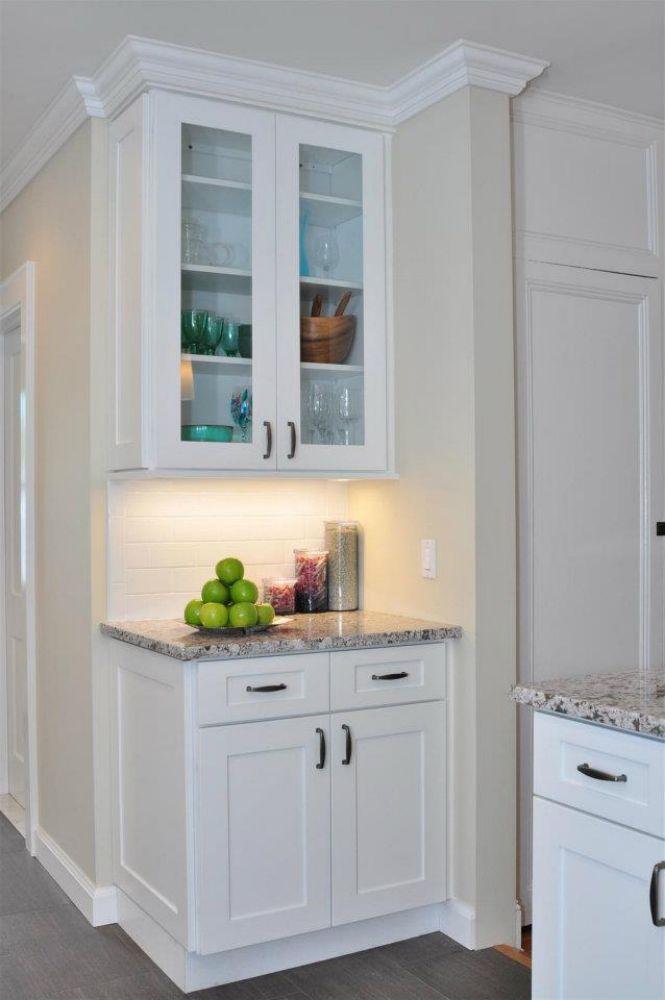Introduction to Transitional Kitchen Design
Transitional design is one of the most popular styles in modern homes because it blends the warmth and elegance of traditional design with the clean lines and simplicity of modern aesthetics. Unlike styles that lean heavily in one direction, transitional design focuses on balance—bringing together timeless elements while still looking fresh and current. In kitchen design, transitional styles often feature shaker-style doors, neutral color palettes, functional layouts, and a mix of natural and contemporary finishes.
Forevermark Petit Brown cabinetry, with its rich espresso finish and streamlined construction, naturally lends itself to this category. The key question is whether it fits within transitional design principles, and if so, how it can be effectively used.
Understanding the Characteristics of Forevermark Petit Brown
Forevermark Petit Brown cabinets are recognized for their deep, espresso-brown finish and simple yet elegant lines. Some defining features include:
-
Shaker-inspired design: A flat panel with minimal detailing that is versatile enough for multiple design themes.
-
Rich brown finish: Warm and sophisticated, offering depth and contrast in kitchen spaces.
-
Durability: Built with solid construction that suits both practical and aesthetic needs.
Because transitional kitchens often require cabinetry that bridges traditional warmth with modern simplicity, Petit Brown becomes a strong contender for this style.
Why Petit Brown Fits Transitional Aesthetics
Transitional design thrives on combining old and new, and Petit Brown cabinets fit seamlessly into this approach. Reasons include:
-
Neutral yet rich tone: The espresso finish offers warmth associated with traditional design while maintaining the neutrality required in modern spaces.
-
Flexible styling: Works equally well with stone countertops, stainless steel appliances, or rustic wood accents.
-
Minimalistic details: The shaker-inspired door style provides subtle sophistication without overwhelming the space.
In transitional kitchens, Petit Brown can act as a unifying element that ties together diverse materials and finishes.
Pairing Petit Brown With Countertops
Countertops play a vital role in defining whether a kitchen leans more traditional, modern, or transitional. With Petit Brown, the following countertop materials help establish a transitional feel:
-
White quartz: Crisp and contemporary, it balances the richness of Petit Brown.
-
Marble with subtle veining: Adds elegance without overpowering the space.
-
Light granite: Offers a mix of natural texture and modern usability.
These materials highlight the transitional balance by blending natural stone aesthetics with sleek surfaces.
Backsplash Options That Support Transitional Design
The backsplash is another key element for establishing the kitchen’s overall style. With Petit Brown cabinets, consider:
-
White or light gray subway tile: Clean and modern but timeless in appeal.
-
Glass mosaics in neutral tones: Add a contemporary touch without clashing.
-
Stone slab backsplashes: Luxurious yet understated, perfect for transitional design.
The right backsplash provides visual harmony, ensuring the kitchen doesn’t lean too heavily toward traditional or modern.
Flooring Choices for Transitional Kitchens With Petit Brown
Flooring ties the entire kitchen together. For a transitional design with Petit Brown, lighter flooring materials work best:
-
Light hardwood floors: Bring warmth and contrast without making the space feel too dark.
-
Neutral porcelain tiles: Provide durability and sleekness.
-
Patterned tile in soft hues: Adds a hint of character while keeping the design grounded.
These flooring options ensure balance while complementing the darker tones of Petit Brown.
Hardware and Fixture Pairings
Hardware and fixtures can dramatically affect whether Petit Brown cabinets appear more traditional, modern, or transitional. Transitional pairings include:
-
Brushed nickel or stainless steel: Modern yet timeless, great for pulls and knobs.
-
Matte black: Adds contemporary flair without being overpowering.
-
Oil-rubbed bronze: Leans slightly traditional but still works in a transitional setting.
Similarly, light fixtures like pendant lighting or under-cabinet LED strips can enhance functionality while reinforcing transitional aesthetics.
Using Petit Brown in Open Concept Kitchens
Open concept layouts often blur the lines between kitchen, dining, and living spaces. Petit Brown works well in transitional open layouts because it:
-
Provides warmth that makes the kitchen feel connected to living spaces.
-
Creates contrast against lighter walls or furniture.
-
Offers versatility, allowing the kitchen to be styled more formal or casual depending on adjacent décor.
This flexibility is exactly what transitional design seeks to achieve.
Mixing Petit Brown With Other Forevermark Finishes
Another hallmark of transitional design is the use of two-tone cabinetry. Petit Brown pairs exceptionally well with other Forevermark finishes, such as:
-
Ice White Shaker: Creates a balanced two-tone look that blends modern brightness with traditional depth.
-
Greystone Shaker: Provides a cool-toned contrast that still feels warm and inviting.
-
Nova Light Gray: Offers a softer transitional look with a mix of cool and warm tones.
This approach makes Petit Brown even more adaptable within transitional kitchens.
How Petit Brown Adds Resale Value in Transitional Designs
Because transitional kitchens appeal to a wide range of buyers, using Petit Brown cabinets can be a smart investment. Prospective homeowners often appreciate:
-
Neutral appeal: Espresso tones are universally attractive and pair easily with multiple styles.
-
Durability: Forevermark’s quality construction ensures lasting use.
-
Design flexibility: Petit Brown works well for homeowners with both traditional and modern preferences.
For resale, transitional kitchens with Petit Brown often stand out because they avoid being “too trendy” or “too outdated.”
Practical Considerations for Petit Brown in Transitional Kitchens
While Petit Brown fits transitional aesthetics beautifully, homeowners should also consider:
-
Lighting needs: Darker finishes can make small spaces look tight, so bright lighting is essential.
-
Maintenance: Fingerprints and dust can be more noticeable on dark finishes, requiring regular cleaning.
-
Room size: Larger kitchens can accommodate Petit Brown more easily, but small kitchens may benefit from mixing it with lighter finishes.
With these considerations, homeowners can make informed decisions when incorporating Petit Brown.
Conclusion
Forevermark Petit Brown is indeed a strong candidate for transitional design. Its rich espresso finish, clean shaker-inspired lines, and versatile styling options allow it to balance traditional warmth with modern simplicity. Whether paired with bright countertops, sleek hardware, or lighter flooring, Petit Brown adapts seamlessly to transitional kitchens. Its ability to blend with other Forevermark finishes also makes it suitable for two-tone designs that are popular in transitional interiors. Ultimately, Petit Brown is not just a cabinet finish—it’s a design bridge that connects past and present, making it a timeless choice for homeowners who want both elegance and practicality.
Read: Can You Use Forevermark Petit Brown In U-Shaped Kitchens?
Read: How Do You Add Open Shelving With Forevermark Petit Brown?
Frequently Asked Questions
Q1: Can Petit Brown cabinets work in both small and large kitchens?
A1: Yes, though small kitchens benefit from additional lighting or mixing Petit Brown with lighter finishes to avoid a closed-in feeling.
Q2: What hardware finishes best complement Petit Brown in transitional kitchens?
A2: Brushed nickel, stainless steel, and matte black are the most versatile options for transitional styling.
Q3: Can Petit Brown be combined with other Forevermark cabinet colors for a transitional look?
A3: Absolutely. Popular combinations include Petit Brown with Ice White or Greystone Shaker for a balanced, two-tone design.
Q4: Is Petit Brown better suited for traditional or modern kitchens?
A4: Petit Brown works well in both, but it truly shines in transitional kitchens where its neutral richness bridges the two styles.
Q5: Does Petit Brown increase the resale value of a home?
A5: Yes, because transitional kitchens with Petit Brown appeal to a broad range of buyers, offering timeless style and versatility.

